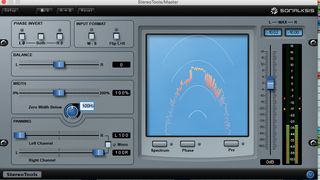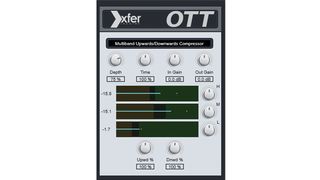Ask yourself this: Have you always wished your bottom had more body; longed for better stereo balance; or held your head in shame while another producer proudly displayed their broad dynamic range? Then this - the alternative to our full-on workout for the time-pressed producer - is the program for you!
Follow these simple steps for half an hour a day and we guarantee your mixdowns will glisten in the halogen glow of your studio lighting, shine out of the speakers and make you the envy of your fellow producers.

1. Punching below the belt
For punchier subs, use a plugin to mono the signal below 100Hz on every single stereo channel in your mix (and the master channel). The cumulative effect is subtle but important.
2. Fader pull-downs/pull-ups
If you’ve mixed your track with compression applied to the master, disengage it, pull all your channel faders right down and set all the levels from scratch, attempting to achieve the same balance as when you had the compression applied. Hint: you can, and it will be better for it! And even if you didn’t have compression applied, do this anyway!
3. Don't over-exert kicks and snares
For punchy kicks and snares that slice through cleanly without being too loud or harsh, start by adding a sidechain-enabled compressor to your bass (using kick and snare as the trigger). Set very fast Attack and Release times, and reduce the Threshold until you achieve 25-30dB of attenuation (ie, ‘a lot’). Now apply a high-pass filter to the sidechain signal and raise the cutoff (thus isolating the transient) until the kick/snare ‘crack’ cuts through without audibly affecting the bass level (usually above 1kHz). Now copy this setting to every musical channel in your mix.
4. Impress with the right top
Getting hats to sit cleanly in the mix is essential to today’s bright, tight, phat mixes, but it can be hard to accomplish in a busy arrangement. For smooth hats that sit nicely without being harsh, begin with the following default EQ settings: a low-cut below 300-500Hz, 2-5dB notch cuts at 270Hz and 2.5kHz, a shelf boost of 1.5-3.5dB at 7kHz, and a high-cut above 15kHz. This will accentuate the lower-mids and the high-end, allowing the hats to slot nicely into most modern electronic mixes.
5. Quickly bulk up bass
For dynamic bass with solid sub-frequency weight, apply a multiband compressor set to squash only 150Hz and below. By default, place this after EQ and other compression/limiting but before any sidechain compression being used to pump the bass or duck for transients.

6. Swapping strategies
Pro mixing engineers know that where you place EQ (before or after compression) has a big impact on the way the compressor reacts, but there’s a reason why in most channel strips the default is EQ first: the response is normally smoother and tighter.
With the full mix playing, look through your setup, and in any situation where you have a compressor placed before an EQ, try switching them around. If your mix sounds a little cleaner, keep the change. Cumulatively, it will probably improve the mix.

7. Two-hand expander
If you’re fond of EQ boosts for bringing out certain sounds in the mix, instead try multiband upward expansion to dynamically enhance the desired frequencies. Xfer Records’ free OTT plugin (based on the popular OTT preset setting for Live’s Multiband Dynamics device), is great for this - slap it on, pull back the Depth, and adjust the other parameters to taste!
8. For the smoother parts
To enhance stereo width and mono punch, look for any stereo channel that’s not meant to be punchy (pads, backing vocals, etc) and use a mid/side EQ to notch out 1-3dB around 750Hz-1kHz from the mid signal. This will carve space for the punchy mono elements and vocals in the mono signal and impart distinct identity for the stereo.
9. Low-frequency lifting
Almost every non-pro mix suffers from the same complaint: insufficient separation between bass and midrange. This is surprisingly easy to fix! Go through your entire mix and remove 2-5dB at 270Hz on every single channel. And when not having your track mastered, do the same to your master.
Even applied blindly this will improve 99% of mixes, creating definite space between bass and mids. For final tailoring, A/B with professionally mixed/mastered reference tracks to see if you need to put some character back in at this frequency on some channels.
10. Stereo supplement overdose
Artificial stereo widening effects can add harshness. Wherever you use one, try adding an M/S EQ afterwards, and apply high-shelf attenuation at 10-12kHz to the side signal to soften the results.


